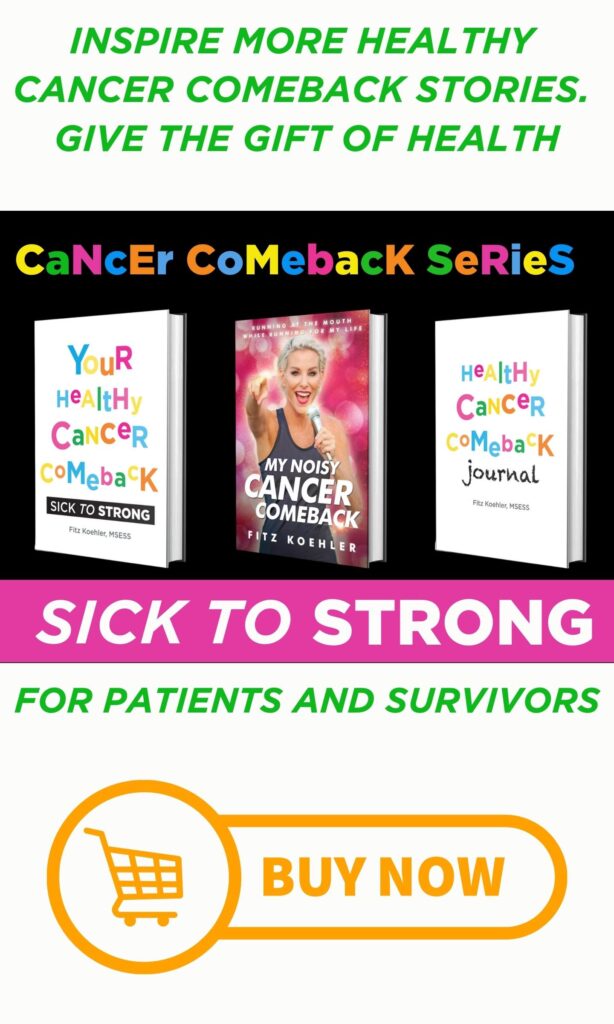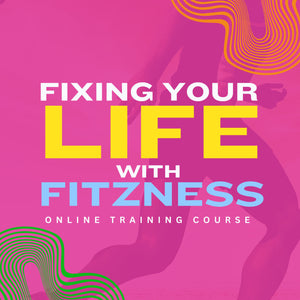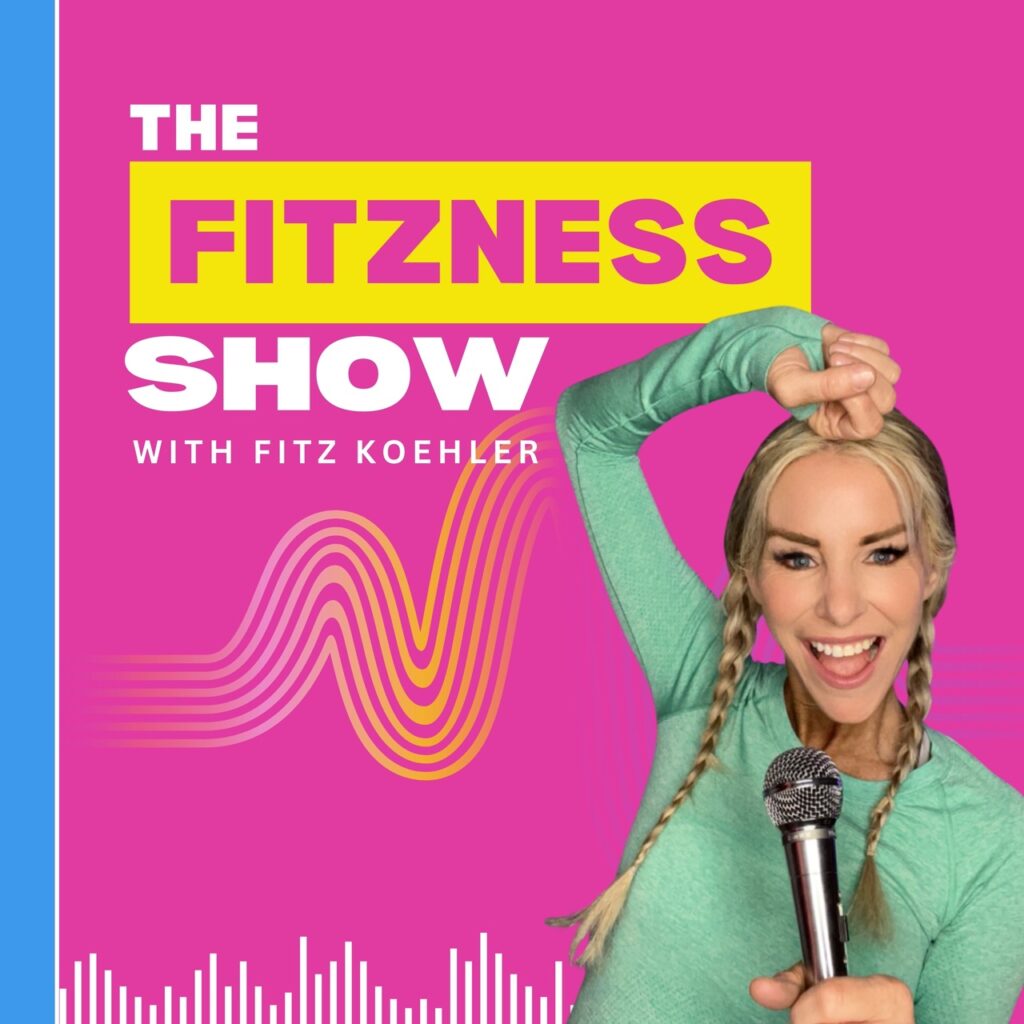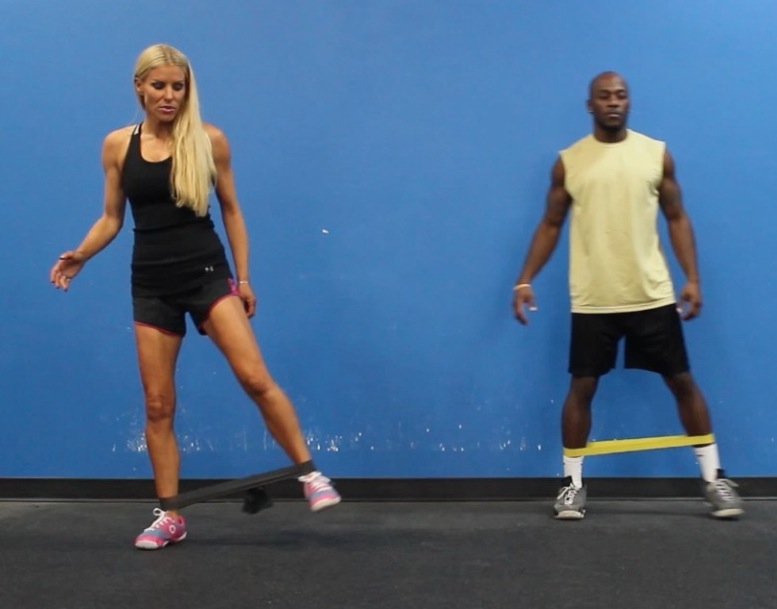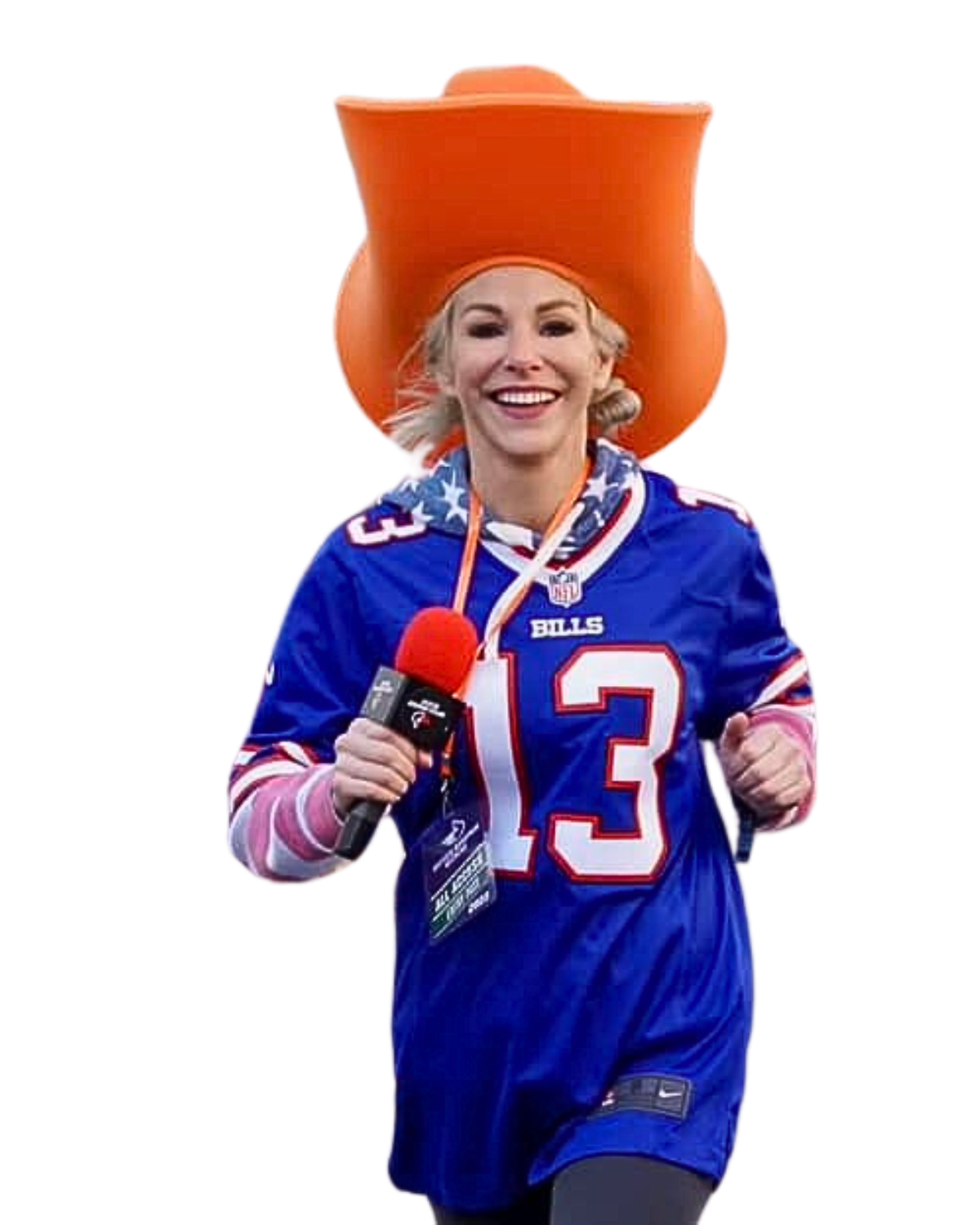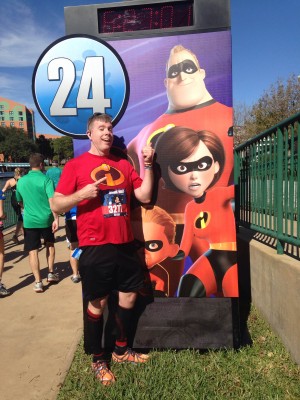
Bryan is definitely Mr. Incredible!
Fitzness.com
I had just turned 41 when the cancer was diagnosed in Oct. 2009. I didn’t really have time to be scared. I saw my family doctor on a Thursday morning and he sent me to get an ultrasound immediately. Then about 2 p.m. that day, I saw a urologist. Within moments of examining me, he confirmed it was testicular cancer and said he wanted to operate the next morning. It had barely sunk in that I even had cancer when I found myself on a gurney rolling back to surgery on Friday morning.
The surgery took place the next morning and was successful. A post-op CT scan showed that it had not spread into my abdomen so it was the best case scenario for a scary diagnosis. They allowed me a couple of weeks to recover from the surgery and then began radiation treatment. Because I had seminoma, and because it was entirely contained in the testicle, I had an excellent prognosis and was told I had an 85 percent chance that it would never recur. But, if I would undergo radiation therapy that number would go to 99 percent. I liked those odds better, so I underwent 20 radiation treatments in November and December of 2009.
My radiation oncologist said that when the radiation was complete I was for all intents and purposes “cured” by their standards. I had bloodwork and x-rays every few months the first year after treatment, all of which were clear. I now have annual x-rays and blood tests which will last for the rest of my life. My first oncologist has already retired and I’m planning on outliving the new guy’s career as well!
Radiation therapy only required a few minutes each day. But the effects were such that each treatment left you feeling weaker than the last. I would go into work each morning, then get the radiation treatment just after lunch, then go home and sleep it off in the afternoon. Many guys undergoing radiation therapy have nausea and vomiting as the number of treatments increase. I am blessed to have a former oncology nurse for a wife, and she knew to request an anti-nausea drug which I took each day before treatment. Thanks to that, I never threw up. But by the 20th session, I was very weak and had a number of strange sensations in the hours after each treatment.
I’ve been a runner virtually my whole life. My father entered me in a community 10K race (called the Expo 10K) when I was 9 years old, and we have both run that race every year since then. My dad, Ron Campbell, and I have now run that race 36 consecutive times. While I loved running, I had never done a distance longer than 10K until I had cancer. When I was trying to get back in shape the spring after my cancer treatment, I saw an announcement on Facebook about the Walt Disney World Marathon. And in just an instant I knew that it was something I wanted to do given the new lease on life I had received with such a successful outcome from cancer. So I spent the rest of 2010 training for the Walt Disney World Marathon. I finished the 2011 Marathon in 4 hours and 41 minutes, and crossing the finish line was easily the greatest feeling I had ever had outside of getting married and having children. WDW has been a place I’ve loved my whole life (I worked there in college, we spent our honeymoon there, I had been on vacation there the week before my cancer diagnosis). So to finish my first marathon in that place with all that support and encouragement was one of the most significant moments of my life. Before I even left the resort that weekend, I had already decided I wanted to push myself further and do the Goofy Challenge in 2012. What I didn’t know at the time was that my hips were about to break down from the AVN.
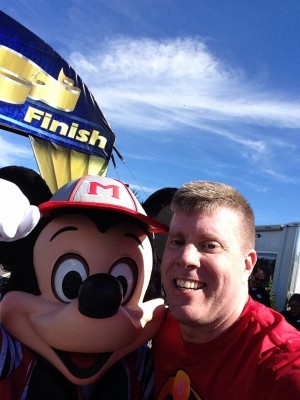
Two amazing men.
Fitzness.com
My AVN was officially diagnosed in August 2011. I had been dutifully training for the 2012 Goofy Challenge when I started having the hip pain. It had gotten so bad by August that I could barely walk at all following a 5K race on a Saturday morning. I limped in to see an orthopedic doctor later that week and he ordered an MRI that officially diagnosed the AVN. We had suspected that I might have AVN when I had the problems with the prednisone in 2009. Unfortunately by the time I had started having pain, the AVN was so advanced that I had essentially no treatment options. This also meant the death of my dream to do the Goofy, but that was the least of my worries at the time. When I researched treatment options, I found a doctor in Boston who was using a new procedure called the Bone Marrow Aspirate Concentrate (BMAC) procedure on AVN sufferers and he took me on as a patient. The procedure which took place in Boston in November 2011 involved harvesting bone marrow from my pelvic crests, separating the stem cells from the other parts of the marrow, and then injecting the stem cells directly into my femoral heads. The theory is that the stem cells can grow into new bone right in place where your femoral heads have died. While he has had great success with the procedure in other patients, it wasn’t successful for me. I started having major hip pain again in the summer of 2012 and within a few weeks I was unable to function in even the smallest things. My only option at that point was total hip replacement. I found a doctor in Nashville, Tenn., Dr. Philip Kregor, who specialized in the anterior approach to hip replacement. The anterior approach is less invasive, has faster recovery time than the traditional method, and has far fewer complications or restrictions for your movement afterward.
It is extremely rare to have both hips replaced at the same time. But both of my hips were so intensely painful that I felt I had no other options. So Dr. Kregor replaced both hips in one operation in October 2012. It was a very successful surgery, and I was able to walk again right away. I used a walker for the first week after the surgery, and then moved to a cane for another week. About two weeks post op I was walking without assistance. I was told that I could no longer run because long distance running is particularly hard on the artificial joints and could shorten their expected life span of 15 to 20 years. However, I was told I could walk as much as I wanted. So I began walking as my main source of exercise and found that I really enjoyed it. I also started walking faster and faster and started challenging myself to see how fast and how far I could walk. I watched my minutes per mile drop while my endurance to walk further and further distances increased. I walked a half marathon race in April 2013 and finished it in 2 hours 37 minutes which was faster than many joggers.
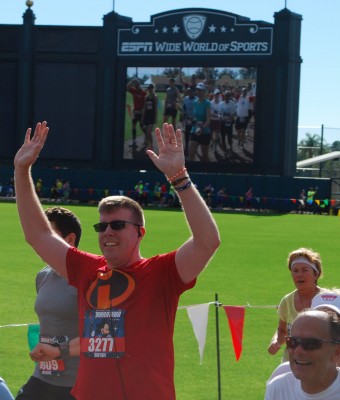
Responding to the chEARS from fans.
Fitzness.com
Somewhere along the way, my walking evolved into what could more accurately be described as a hybrid walk/run. It was definitely not my traditional running mechanics. But it was more than a walk. I found that I could take very short strides with my feet coming only a minimal distance off the ground and do that at a high rate. I was probably taking two of these strides to equal one of my traditional running strides. As I continued to get stronger, I decided I was going to renew my dream to get back to WDW and do the Marathon again. I didn’t envision doing the Goofy, or the Dopey, but just to finish the full Marathon one more time as a walker (or hybrid walker) became my mission. I registered for the race in the summer of 2013, and in order to get the best corral placement I also registered for a half marathon in Nashville, Tenn. That race actually took place one year to the day after my hip replacement surgery. And I finished that race in 2 hours 5 minutes and 30 seconds. That was a 9:30 min/mile pace. It was the best I had ever felt in any race in my life. It was a flat course, a beautiful day, and it dovetailed perfectly with my Marathon training using the Jeff Galloway marathon training plan.
I had another setback following that half marathon, as I started having some soft tissue pain around the area of my hip replacement scar. This kind of scared me to the point that I actually decided I was probably not going to get to do the Marathon after all. I stopped my training all together after a 17 mile walk on Oct. 20, 2013. I rested the first few weeks, then began doing elipticals because they were supposed to be 100 percent safe according to my hip surgeon. But a funny thing happened: I started feeling better. And when I got the email from runDisney in December that the race waivers were ready for printing, it occurred to me that I could still do the race. I wouldn’t be able to do it fast, but there was no reason I couldn’t do it as regular walker instead of a speed walker. I got final clearance from my surgeon to give it a try just a few days before the race, and the dream that I thought had died came back to life!
My cancer treatment wrapped up in December 2009. I ran that first WDW Marathon 13 months later in January 2011. My hip replacements were in October 2012. I walked the WDW Marathon 15 months later in January 2014.
These races included so many highlights that I can barely count them. I made a little sign to that I wore on my back that said
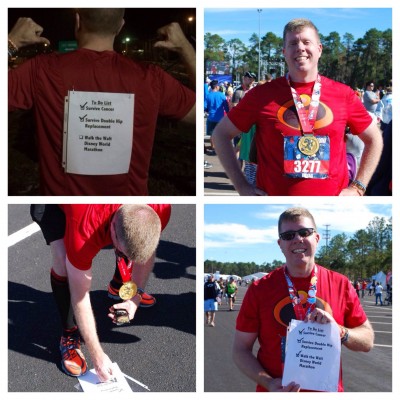
Amazing bucket-list.
Fitzness.com
“To Do List: Survive Cancer, Survive Double Hip Replacements, Walk the WDW World Marathon”
The first two items were checked, but the last one was unchecked. I’ve run and walked a lot of races and seen a lot of fun signs along the way so I thought this would be a fun way to announce that I was there as a slow walker not just to get in people’s way, but to make a statement that by God’s grace I had overcome some hard things. What I didn’t anticipate was how many people would read the sign and then either give me a high five, a fist bump, a pat on the back or some other encouraging word. I would conservatively estimate that 400 people did one of those things, or took a picture of the sign along the course. It was easily the most uplifting thing I’ve ever experienced having so many people say so many nice things to me along the way.
Also, I rode the Expedition Everest roller coaster during the Animal Kingdom portion of the race which was so much fun I could barely contain myself.
Because I had not gone further than 17 miles in any of my training I knew that the last 10 miles would be the hardest. I took water or Powerade at every station and was surprised to see that I was able to keep walking hard the whole way. I did slow down some the last few miles, but I was still pushing myself all the way to the end.
I wore a Mr. Incredible themed costume and many of the runners and spectators gave me a number of shout outs for that even without seeing the sign on my back. I hammed it up with all of them and did bicep poses whenever someone shouted “Hey Mr. Incredible! You go!” My best friend, Phil Newman, drove down with me to be my support team and he met me several times along the course. And during the part where you pass through the Atlanta Braves spring training stadium he found the DJ who was making announcements about the runners and had him give me a huge shout out and asked me to wave to the crowd. I got a huge ovation from everyone there and that really pumped me up.
I was an emotional wreck coming across the marathon finish line. It was the end of a long day of walking, but more importantly the fulfillment of a dream I had been dreaming for three years. Finishing any marathon is a big deal. Finishing this marathon, after cancer and hip replacement was such a joyous, emotional thing that getting through the last 26 feet without bawling was a triumph in itself.
I have learned about myself that I work much better in life and in my fitness pursuits when I have a specific goal. I wanted to “get healthy” in 2010 following the cancer treatment. But that was so nebulous and hard to define. But when I made the commitment to run a marathon, it totally transformed every workout and every healthy choice I made for many months. And setting another goal of finishing another marathon kept me going to through all the many ups and downs with my hip issues from 2011 to the present. I would tell anyone fighting illness to never forget to be thankful for every good thing in life, even in the hardest moments. Having a thankful attitude can transform desperate situations into treasured gifts. And having specific goals for things to do with your life after illness can give you something to drive you through the hard moments as well.
Two days after the marathon I saw my hip surgeon for my annual checkup and he said I was doing so well that he didn’t need to see me for another two years. He also said he’d like to see video of me doing my “hybrid walk” and give me some feedback on how safe it is for someone to do with two artificial hips. I’d love to think I’ve found a way of moving that is safe for the joints, and more than that, extremely healthy for my body and mind. No matter which way that goes, I’ll keep walking, and like Walt Disney himself famously said, “keep moving forward.”
-

-
Two amazing men.
Fitzness.com
-

-
Amazing bucket-list.
Fitzness.com
-

-
Bryan is definitely Mr. Incredible!
Fitzness.com
-

-

-

-

-

-

-

-
Responding to the chEARS from fans.
Fitzness.com
-

-



















